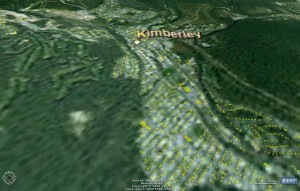I am wondering if we should include the topic of virtual 3d city models or – as they are called lately – digital cities in our blog. After some considerations I think that we should include this topic for two main reasons.
First of all the authors of this blog come from research in landscape and environmental planning and we tend to have an all-embracing understanding of landscape. This means that the word ‘landscape’ is an concept which includes topography, vegetation and wildlife, land-use, housing, climate, etc.. In this all-embracing concept cities are part of the landscapes around us.
Secondly we do not do landscape visualization just for the fun of visualizing a landscape, but because we think that landscape visualizations can support planning descisions and communication processes in planning processes. Thus we have an aim, a goal why we visualize and this goal is the driver for visualizing rural landscapes, as well as suburban landscapes or cityscapes. I think that we will benefit if we are looking at concepts from landscape and city visualization/modelling at the same time and relate the visualization concepts to the underlying planning tasks.
Another reason to include digital cities from my point of view is that I am currently working on a project which deals with virtual 3d city models and visualization of the cityscape. The project is funded by the Federal Ministry of Education and Research, Germany and deals with the usability to support communication and information in urban land management by using virtual 3d city models as integration media for heterogeneous data. For more information hava a look at www.refina3d.de. (only in German)


